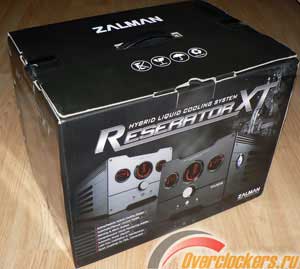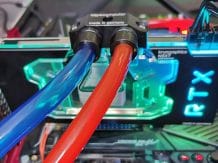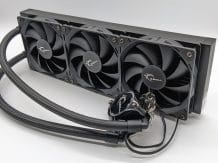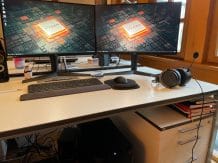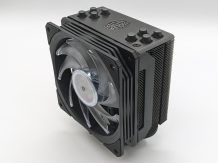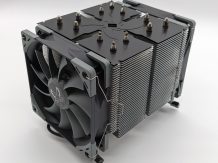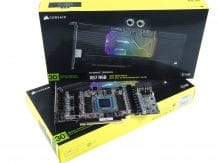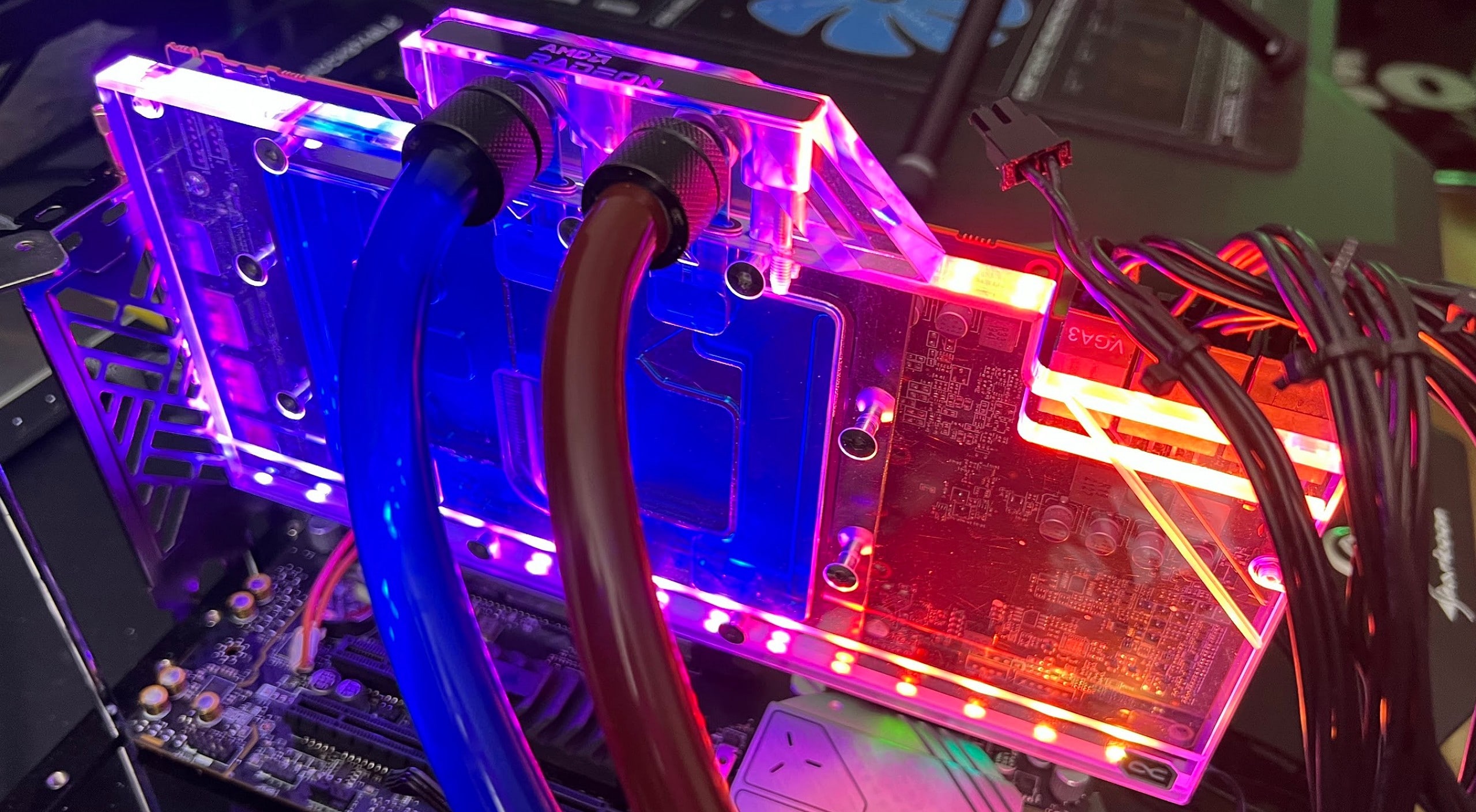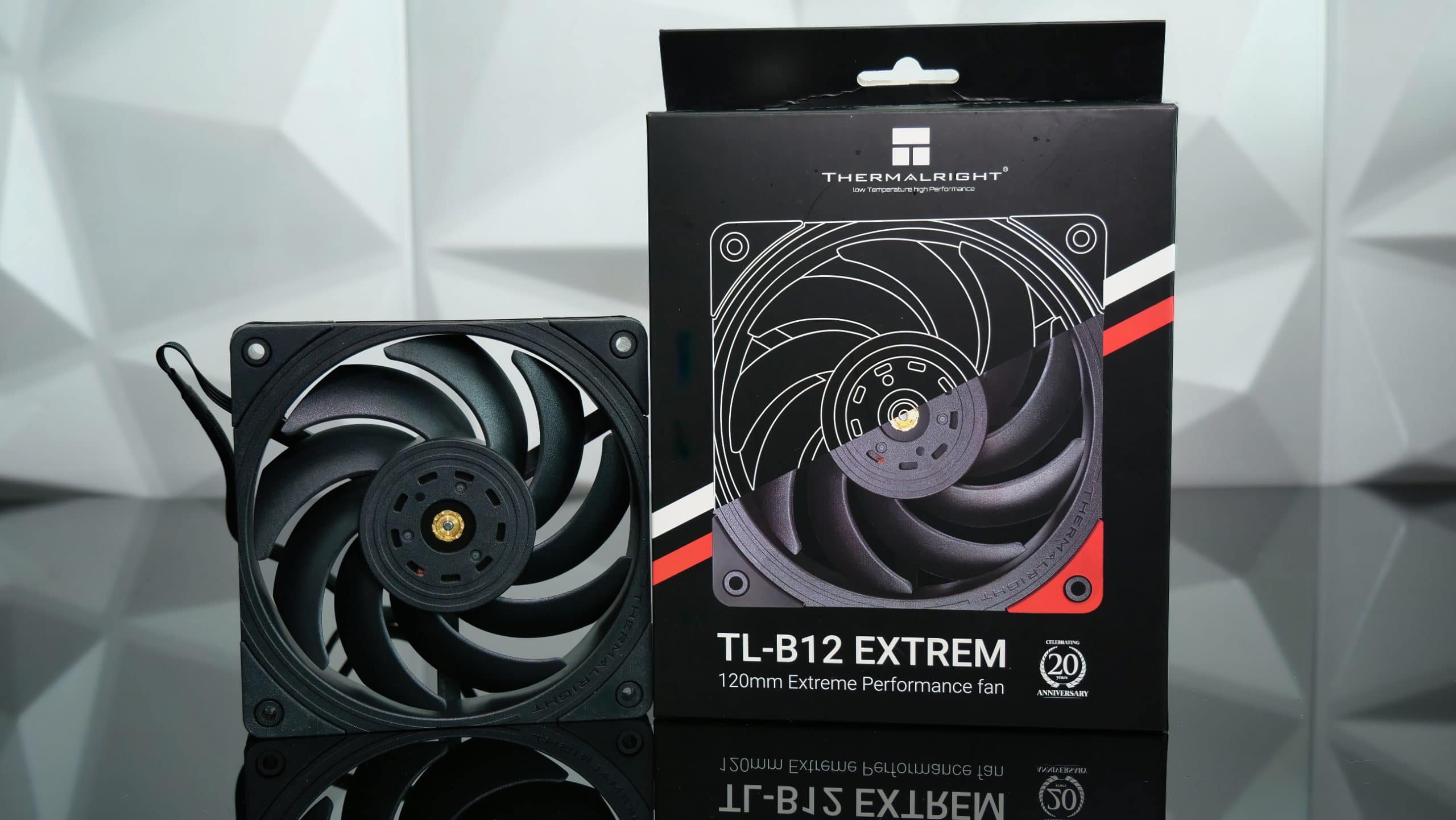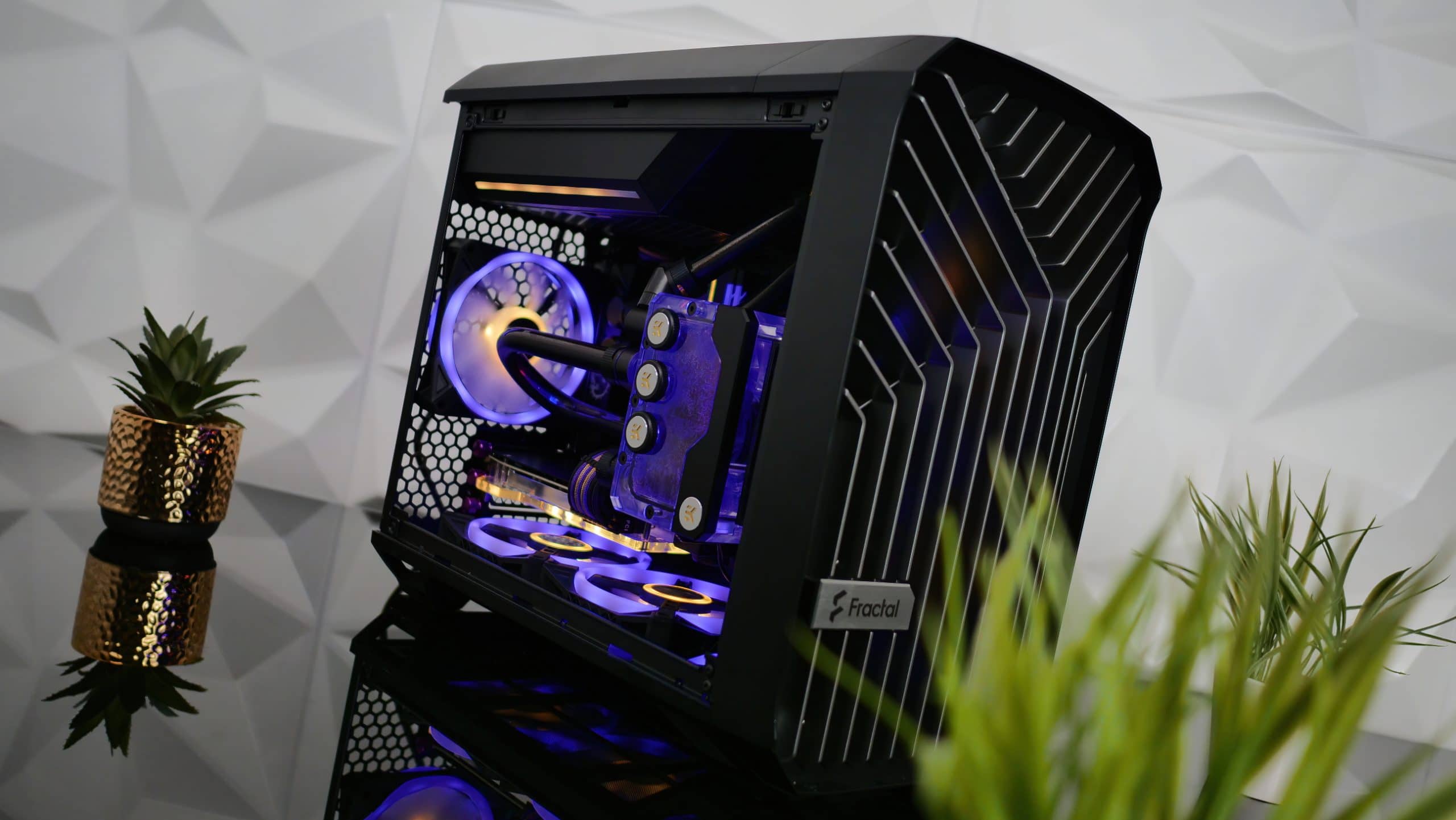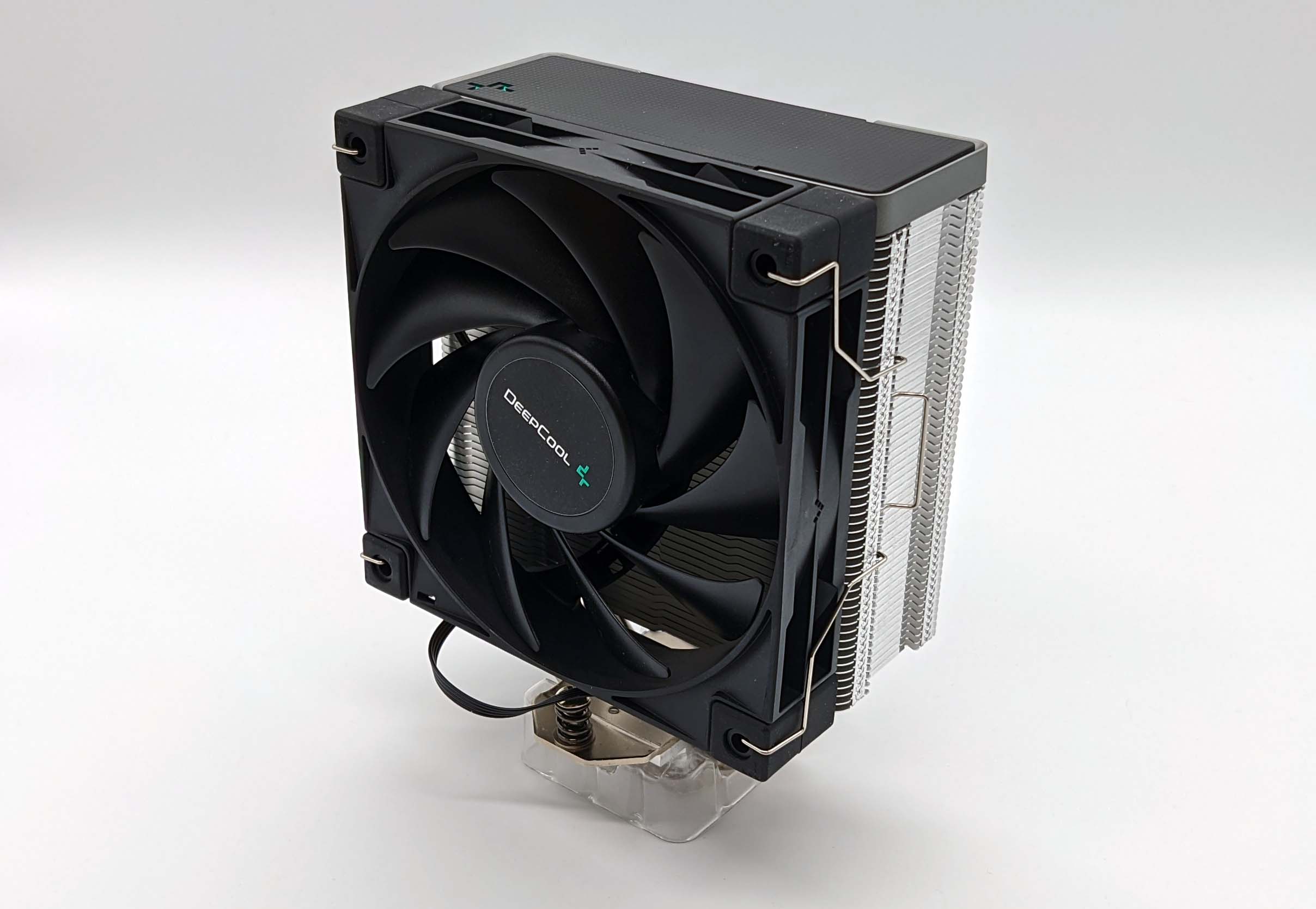efficient, quiet, stylish and expensive liquid cooling system
–
Demonstrated early this spring at CeBIT 2007, an active liquid cooling system Zalman Reserator XT finally got to our laboratory. For various reasons beyond our control, her path was difficult and thorny. However, despite all the twists and turns and difficulties of the Russian mail, and then the customs, today we are pleased to present you with a detailed review and testing of the new CBO from the Korean company.
First of all, it should be noted that Zalman for the first time departed from its concept of fanless liquid cooling systems, which were the Zalman Reserator 1 / Plus and Zalman Reserator 2. The new product uses a 140 mm variable speed fan. However, this is not the only difference between the liquid cooling system and its predecessors. In the design of the Zalman Reserator XT, several innovative ideas have been implemented, thanks to which the new CBO should be recognized by overclockers all over the world. But first things first.
packaging and equipment
The new liquid cooling system from Zalman comes in a huge box, mostly black. On the front side of the package there are almost full-size photos of the main unit of the cooling system:
The box is heavy and inconvenient in size, so it will be quite problematic to carry it alone from the store. In addition to photographs on the front side of the package, its key features are shown. On one of the sides, technical characteristics are indicated and the features of the functioning of the system are marked:

announcements and advertisements
-14000р на RTX 3060 ASUS Dual
RTX 3060 MSI Gaming – a drain for a penny
-15000р на RTX 3060 MSI Ventus
Prices for video cards went down steeply
-14000р на RTX 3060 Gigabyte Eagle
Another top vidyaha with a mega discount
RTX 3060 – prices have gone down
First-hand Z590 motherboards at very good prices
RTX 3060 12Gb in XPERT.RU – be in time 🙂
RTX 3070 at XPERT.RU at the lowest prices
Lots of RTX 3090 in XPERT.RU
When the cardboard box is opened, the foam lid of the inner packaging opens up:

On top of it are instructions for the assembly and operation of the system, as well as a flexible hose 4 m long, 8 mm in inner diameter and 2 mm thick.
There is another level of packaging under this kind of plastic cover:

It contains a water block for the central processor Zalman ZM-WB5 in the package, a cable for connecting the main unit power supply, a power supply contact closure wire, a concentrate of Zalman ZM-G300 anti-corrosion liquid, a plug on the back panel and clamps, as well as a pumping hose systems with two fittings.
Finally, we open the next tier and get to the main block of the cooling system:

The latter is securely fixed in a foam base, which, together with a thick cardboard shell, sufficiently protects the device from possible damage.
I think you have already noticed that with the new cooling system, the water block is no longer supplied to the video card, as was the case with the previous Reserator models. The recommended cost of the new item is announced at $ 400. Let’s see how functional and effective the liquid cooling system is, and we will begin to study it by examining the main unit of the system.
main unit Zalman Reserator XT
The main unit of the Zalman Reserator XT has two color options: silver (or as the manufacturer calls it – titanium) and black. A black CBO “came” to us for testing:

The large rectangular box measures 350 x 210 x 180 mm and weighs as much as 7 kilograms. The material from which the main unit is made is anodized aluminum.
The front panel of the cooling system immediately attracts attention:

Three backlit indicators on the bezel are complemented by a large fan speed control and coolant flow control, as well as three buttons. I will talk about their functional purpose in the section describing the assembly of the system. On both sides of the Reserator there are slots through which the thick fins of the radiators are visible:

There is also a liquid movement indicator on the side. During normal operation of the assembled and filled system, the indicator blades rotate:

The higher the flow rate, the more often the indicator blades rotate.
The neck of the expansion tank of the system is located on the top cover of the main unit:

On the rear wall, there are inlet (IN) and outlet (OUT) nozzles, a power connector and a grille for exhausting air heated by radiators, through which a 140-mm fan is visible:

It is a pity that the grate is not made of wire. Thus, it would be possible to slightly reduce its area and reduce the resistance to air flow from the fan, as well as reduce the noise level.
At the bottom of the box, only 4 rubber feet can be noted, on which the main unit will stand steadily:

When trying to “softly” disassemble the main unit of the Zalman Reserator XT, we managed to remove its rear wall with a fan:

As it turned out, the design of the main unit is quite interesting and I would even say original:

On the side walls of the box, there are two radiators pierced with a tube six times each. In the very center of the block, the capacity of the expansion tank is screwed to its top cover. Please note that its walls have a ribbed structure, which should also help to reduce the temperature of the coolant. A pump with a low capacity of 300 liters per hour and a maximum liquid rise of 1.8 meters is installed under the tank. The exact same pump (most likely also of the Eheim brand) is used in the Zalman Reserator 2. All system components are connected by flexible hoses with clamps.
A 140 x 25 mm fan mounted on the rear wall of the unit expels heated air from the main unit case. Its speed is regulated both in automatic mode and manually in the range from 900 to 2000 rpm (according to monitoring data, according to technical characteristics, the range is from 500 to 2000 rpm). The air flow enters the two radiators through slots in the side walls. The dimensions of each of the radiators are such that the installation of a pair of 120-mm fans on each radiator is straightforward (with the direction of the air flow inside the case). True, for this you have to disassemble the entire system and come up with what to power them from. The fans can also be installed on the outside of the radiators, that is, outside the main unit case. But such an easy-to-implement solution will ruin the appearance of a stylish system and will definitely not suit aesthetes. Also, inside the case, the fans will be harder to hear. In general, there is still a lot to work on here, as it seems to me. There is only one little thing left to do – purchase Zalman Reserator XT 🙂
CPU waterblock Zalman ZM-WB5
Zalman Reserator XT comes with a water block for cooling the central processor ZM-WB5… This is the fifth generation of water blocks manufactured by the Korean company. Overclockers who ate an overclocked dog on liquid cooling systems are rather skeptical of Zalman water blocks, scolding them for their primitive design and insufficient efficiency for their cost. Let’s see how Zalman did it this time.
The waterblock is supplied in a transparent plastic package through which the waterblock itself is visible, as well as two pairs of clamps of different diameters that come with it:


In the upper part of the package there is a small box with the accessories of the delivery set. It contains the following components:

- backplate for motherboards with LGA 775 socket;
- plastic frame for attaching the water block to the LGA 775;
- fastening clip for motherboards with Socket AM2 and 754/939/940 connectors;
- a set of screws, bushings and cardboard washers;
- four clamps;
- a pair of aluminum brackets for installing a cooler on an LGA 775;
- a tube of Zalman CSL850 thermal paste;
- Zalman logo sticker;
- instructions for installing a waterblock in two languages.
The dimensions of the water block are 63 x 63 x 40 mm, and its weight is 160 grams. The waterblock has a copper base and an aluminum cover into which two fittings are screwed:

The fittings have a double diameter, which allows the use of hoses with the following diameters (outer x inner): 14 x 10 mm, 13 x 10 mm, 13 x 9 mm, 12 x 9 mm, 12 x 8 mm, 11 x 8 mm, 10 x 8 mm:

The base of the water block and its lid are sealed with a warranty seal, however, the internal structure of the water block can be judged by the photo on the package:

As you can see, the Zalman ZM-WB5 has 144 pins that are almost cylindrical in shape. Let me remind you that the previous model of the Zalman ZM-WB4 Gold water block has a completely different internal structure (more primitive, in my opinion).

We will definitely check how the new waterblock turned out to be more effective than the previous version, but for now let’s look at the quality of the treatment of the base of the waterblock:

To say that it is perfect is to say nothing. There are not enough epithets for such a smooth and fantastically polished surface to convey all its splendor.
The new waterblock can be installed on platforms with LGA 775, Socket AM2 and 754/939/940 connectors. There is no provision for installing a water block on Socket 478. On platforms with AMD K8 processors, the Zalman ZM-WB5 is installed using the included clip, which fits over the center union nut and engages in the teeth of a standard plastic frame. When installed on motherboards with an LGA 775 socket, a plastic backplate, a frame and two separate fastening clips are used:

In the attached instructions for installing the water block, this process is described in more detail (
PDF format, 0.9 Mb
). The force of pressing the water block to the processor heat spreader is very high, and the type of fastening used does not allow Zalman ZM-WB5 to rotate on the processor heat spreader cover.





